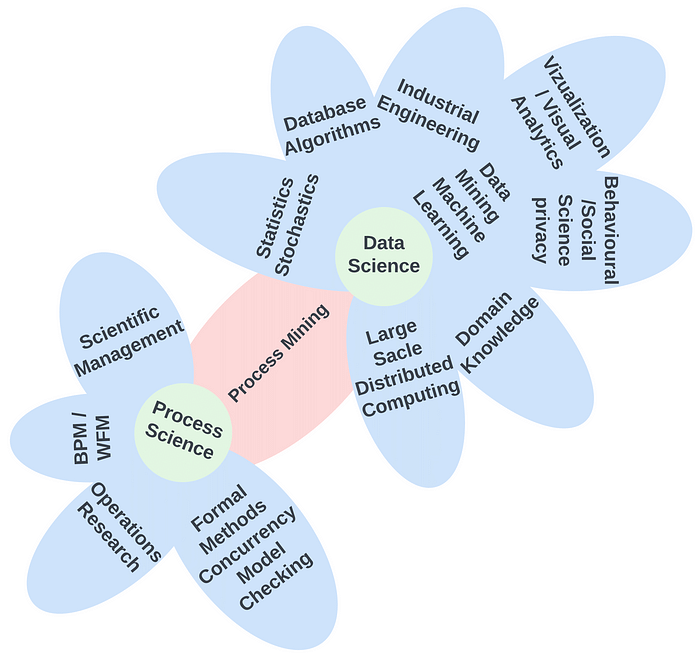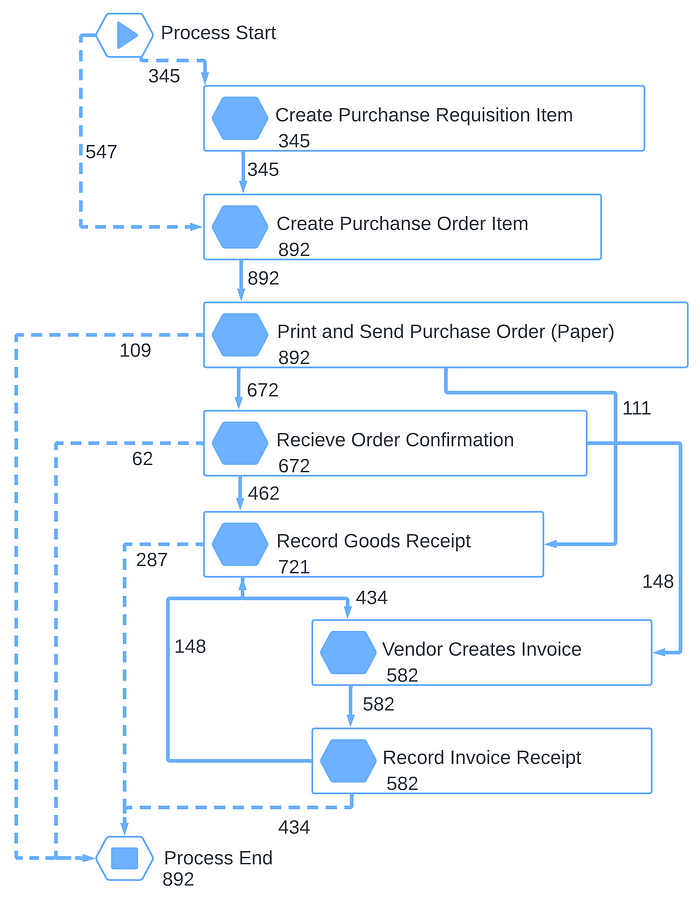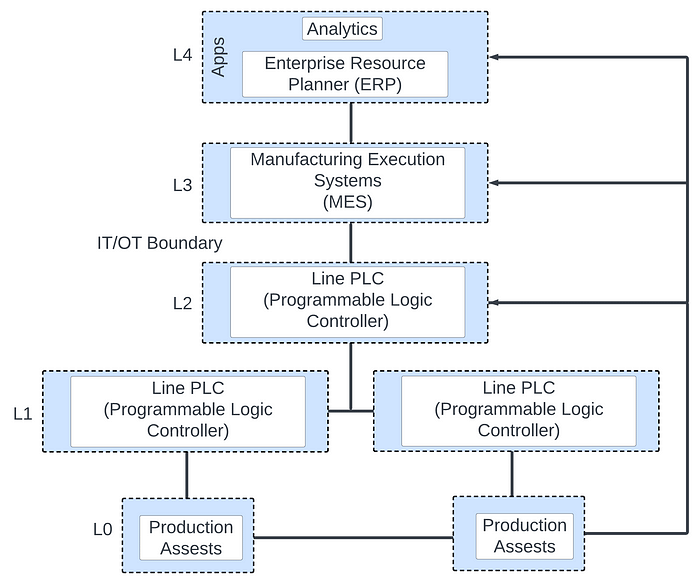
Unleashing Operational Excellence Through Process Mining and Digital Transformation in Industry 4.0
Last Updated on August 18, 2023 by Editorial Team
Author(s): Dipta Roy
Originally published on Towards AI.
Introduction
Digital technologies are becoming increasingly popular among organizations, regardless of their industry, for achieving improvements in business outcomes, revenue growth, and sustainability. By enabling better collaboration and optimization of business processes, digitalization can improve employee productivity and the quality of outputs in any organization. However, there is often a gap in understanding the business processes that are used throughout the organization and the key parameters for improving the current outcomes. Thus, understanding the “how” and “why” of a business’s behavior is crucial for improving its economic performance, but many companies struggle to put such a strategic plan into action because they are unsure where to start. At the same time, it is evident that a transformation strategy cannot be developed or executed without the use of software tools. Therefore, the aim of this work is to guide readers on the technical and functional aspects of implementing a business process management (BPM) program, augmented by a process mining tool. The article provides a detailed guide for introducing modern digital technologies into business operations. It covers topics such as the importance of BPM, digitalization, and process mining to achieve operational excellence (OpEx). The article also discusses infrastructure and information technology (IT) requirements for implementing these tools.
1. Process mining as a catalyst for BPM
Process mining [1] is a structured method that combines process science and data science to measure and improve BPM. It provides a detailed analysis of the activities performed across organizations to create an end-to-end process map illustrating how business applications are used, and how employees interact with them to complete work. Process mining is a multidisciplinary field that is commonly used in combination with workflow management (WFM) techniques as shown in figure 1.

Process mining: linking process science and data science [1]
It is a knowledge-based approach that involves using data mining interfaces to collect information and gain insights into the current (AS-IS) end-to-end processes. By studying event logs and user interactions across software hosted on a common platform, one can understand “how” work is done within an organization which is the key essence of process mining. Thus, the data collected can also be utilized to develop a model of the future (TO-BE) desired processes to facilitate business process improvement (BPI) and business process re-engineering (BPR). Process mining tools employ various data science techniques, such as classification, clustering, regression, association rule learning, and sequence/episode mining, to generate insights for a typical workflow. However, event-log mining is the most common technique utilized by most tools, which involves analyzing the details of specific activities, within a workflow to create a comprehensive model of the end-to-end processes. The different components [2] of process mining techniques can be visualized through the block diagram illustrated in figure 2.

The basic components of process mining — discovery, conformance & enhancement [2]
Process mining involves three primary techniques: process discovery, process conformance, and process enhancement. Process discovery uses event logs or historical data to gather process information through unsupervised learning. Process conformance utilizes a pre-existing process model to compare logs and reconstruct the complete process through supervised learning while process enhancement improves an existing process with prior knowledge, after discovering event logs. However, it is important to note that process mining is prone to concept drift [3] problems due to changing nature of processes during the discovery phase. When using a process discovery technique, it is important to maintain a balance between the model being too simple (underfitting) or too complex (overfitting) [3]. Fortunately, most process mining tools have built-in algorithms that handle this automatically, so there is usually no need for manual intervention. Commercial process mining tools use process graphs or spaghetti-like diagrams to visualize process flow. The example of a purchase-to-pay process [4] shown in figure 3, illustrates how process mining tools use event logs to identify the finite states of the workflow and reveal variations, i.e., how different employees perform the same process. These variations, in turn, can provide insights to help organizations save costs, train employees, reduce delivery delays, and formulate effective BPI and quality monitoring strategies like plan-do-check-act (PDCA), define-measure-analyze-improve-control (DMAIC), eight disciplines methodology (8D), 4 quadrants — measure, analyze, improve, and sustain (4Q), etc. to achieve operational excellence.

Process graph: spaghetti-like diagram, representing a purchase-to-pay process [4]
The implementation of BPM across an organization’s function is heavily reliant on adopting digital technologies and reducing the digital divide among its employees. In the context of industry 4.0, the interrelationship between BPM, OpEx, and digital adoption is increasingly vital. Organizations that effectively implement BPM strategies and bridge the digital gap among their workforce will achieve their goals of improving efficiency, reducing production costs, enhancing customer satisfaction, etc., giving them a competitive edge in the market. Therefore, a foolproof BPM strategy must be augmented with effective digitization techniques, as discussed in the next section.
2. Digital transformation techniques for BPM
Digital transformation [5] has gained significant popularity in the 21st century, which refers to the level of digital integration for various business units within an organization. Transformations generally involve the implementation of digital technologies to enhance the customer value proposition, streamline business strategies and workflows, and establish standardized processes. Service offerings, such as PaaS [6] and SaaS [6], entail a range of choices that allow organizations to host and integrate data from multiple software systems, which is crucial for digital transformation. To drive digital transformation in an organization that uses operational technologies (OT), cloud technologies (CT) and IT, digital asset management plays a crucial role. Asset management involves collecting information from digital assets and software systems such as OT networks, industrial control systems (ICS), or supervisory control and data acquisition (SCADA) systems, and consequently acting on them. When IT is combined and used in tandem with OT, it’s called IT/OT convergence [7], which is the main driver of digital technology adoption for an OT-enabled organization and a catalyst for the transformation of operational data. In a production environment, the OT layer accounts for interfacing with the data-generating layer. The block diagram for an IT-OT-CT converged system is represented in figure 4.

A generic model for IT, OT, and CT convergence [7]
By examining the interaction between various software systems and a platform, one can gain a deeper understanding of how data is transformed from multiple sources for analytical operations, like the industrial internet of things (IIoT) [8] environment, which forms the foundation for industry 4.0. Figure 5 illustrates the interconnection and digitalization of a typical IT-OT converged system in the IIoT setting.

Architecture interconnection and digitalization of systems in IIoT [8]
Therefore, to effectively re-engineer established processes and channel employee efforts, it is important to understand how different business applications are used across an organization. Software that can achieve the same, must be able to “mine” event logs and user interactions associated with the applications used. In technical terms, the tool should be able to interact with different databases seamlessly without installing additional database drivers or hardware, and thus it should have the ability to continuously communicate with the open database connectivity (ODBC) [9] layer of various software systems to exchange data. ODBC provides a standard interface between the application and the data source, allowing the process mining software or tool to establish a connection with different database management systems (DBMS). The generic ODBC architecture is shown in Figure 6, which is the basis for data retrieval infrastructure and IT requirements to enable process mining across an organization.

The generic ODBC architecture [9]
The architecture for accessing data via ODBC consists of four layers, with the application layer calling ODBC API (application programming interface) functions to issue SQL (structured query language) queries and retrieve data. The device manager loads ODBC drivers and directs function calls to the ODBC interface, while the driver helps in retrieving data from the source.
To make effective business decisions, data must be collected from multiple resources like an ERP (enterprise resource planning) system, financial repositories like an Oracle database or SAP system, or from digital assets like sensors and transducers, etc., and ingested into a shared platform via the ODBC layer for event log mining and user interaction pattern analysis. However, such connected systems are vulnerable to cyber-attacks, so cyber security and encrypted communication protocols [10] are crucial for protecting data exchange between the data source and platform.
Conclusion:
In conclusion, the collaboration between process mining and digital transformation is a driving force behind successful business process management in the industry 4.0 landscape. Process mining’s ability to dissect processes and reveal insights, combined with digital transformation techniques like IT-OT convergence and secure data exchange, empowers organizations to streamline workflows, make informed decisions, and achieve operational excellence. This synergy enables businesses to adapt to the evolving landscape, enhance efficiency, and maintain a competitive edge in the digital era.
References:
1. van der Aalst, W.M.P., “Process Mining: A 360 Degree Overview” in: Process Mining Handbook. Lecture Notes in Business Information Processing ed. van der Aalst, W.M.P., Carmona, J. (UK, Springer, Cham., 2022), 3–34, https://doi.org/10.1007/978-3-031-08848-3_1
2. Jambak MI, Mohruni AS, Jambak MI, Suherman E, “The process mining method approach to analyze users’ behavior of internet in the Local Area Network of Sriwijaya University”, SINERGI 6, no.2 (June 2022):145–154, https://doi.org/10.22441/sinergi.2022.2.003
3. Leewis, Sam; Berkhout, Matthijs; and Smit, Koen, “Future Challenges in Decision Mining at Governmental Institutions” (paper presentation, AMCIS 2020 Proceedings 6, Advances in Information Systems Research, Salt Lake City, Utah, 2020)
4. Wil van der Aalst, “European leadership in process management”, Communications of the ACM 65, no. 4 (April 2022): 80–83, https://doi.org/10.1145/3511595
5. P. V. M. V. D. Udovita, “Conceptual Review on Dimensions of Digital Transformation in Modern Era”, International Journal of Scientific and Research Publications 10, no.2 (February 2020):520–529, http://dx.doi.org/10.29322/IJSRP.10.02.2020.p9873
6. Tóth, A., & Ge, M., “A Deployable Data as a Service Architecture for Enterprises” (paper presentation, 6th International Conference on Internet of Things, Big Data and Security, IoTBDS, Setubal, Portugal, April 23–25, 2021)
7. M. Felser, M. Rentschler, O. Kleineberg, “Coexistence Standardization of Operation Technology and Information Technology”, Proceedings of the IEEE 107, no. 6 (March 2019):962–976, https://doi.org/10.1109/JPROC.2019.2901314
8. Soujanya Mantravadi, Reto Schnyder, Charles Møller, Thomas Ditlev Brunoe, “Securing IT/OT Links for Low Power IIoT Devices: Design Considerations for Industry 4.0”, IEEE Access 8, (November 2020):200305–200321, https://doi.org/10.1109/ACCESS.2020.3035963
9. Alexander Baklanov, Olga Baklanova, Svetlana Grigoryeva, Saule Kumargazhanova, Indira Sagynganova, Yuriy Vais, “The Development of Hybrid IP Architecture for Solving the Problems of Heating Networks”, Acta Polytechnica Hungarica 17, no.1 (2020): 123–140, https://doi.org/10.12700/aph.17.1.2020.1.7
10. Dhirani, L.L., Armstrong, E.; Newe, T., “Industrial Iot, Cyber Threats, And Standards Landscape: Evaluation And Roadmap”, Sensors 21, no. 11 (2021):3901, https://doi.org/10.3390/s21113901
Join thousands of data leaders on the AI newsletter. Join over 80,000 subscribers and keep up to date with the latest developments in AI. From research to projects and ideas. If you are building an AI startup, an AI-related product, or a service, we invite you to consider becoming a sponsor.
Published via Towards AI
Take our 90+ lesson From Beginner to Advanced LLM Developer Certification: From choosing a project to deploying a working product this is the most comprehensive and practical LLM course out there!
Towards AI has published Building LLMs for Production—our 470+ page guide to mastering LLMs with practical projects and expert insights!

Discover Your Dream AI Career at Towards AI Jobs
Towards AI has built a jobs board tailored specifically to Machine Learning and Data Science Jobs and Skills. Our software searches for live AI jobs each hour, labels and categorises them and makes them easily searchable. Explore over 40,000 live jobs today with Towards AI Jobs!
Note: Content contains the views of the contributing authors and not Towards AI.














